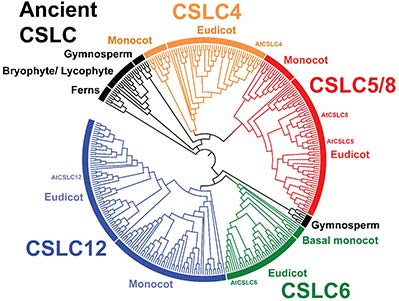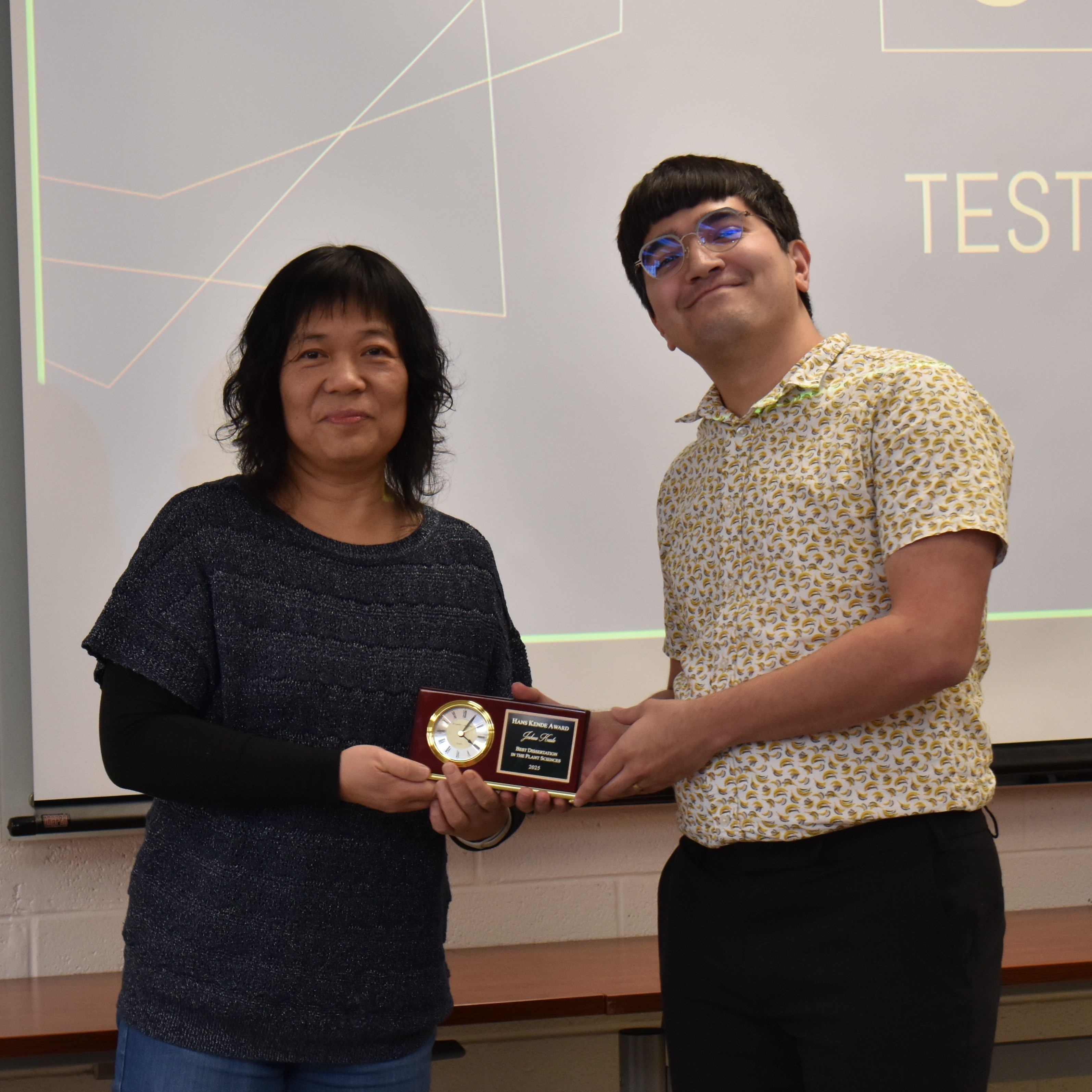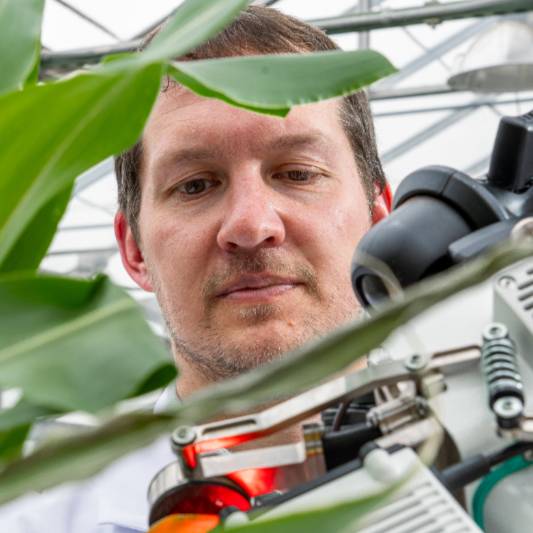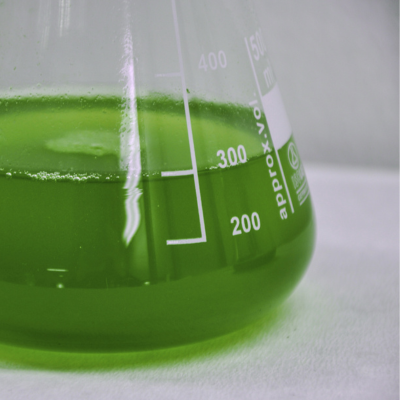Investigation of a protein family that generates plant cell walls
A new study increases our understanding of the biosynthesis of xyloglucan, one of the most common polysaccharides in plant primary cell walls.

Scientific Achievement
Reverse genetic studies on Arabidopsis cellulose synthase like-C (CSLC) genes show that these genes synthesize the xyloglucan (XyG) glucan backbone.
Significance and Impact
Plant cells have complex cell walls that are important for maintaining their structural and functional integrity. XyG is one of the most common polysaccharides in the primary cell wall. Although XyG’s structure is well known, its biosynthesis is poorly understood. This study identifies the enzymes responsible for XyG synthesis by demonstrating that all 5 members of the CSLC family synthesize the XyG backbone. The evidence provided in the work that deletion of CSLC-function leads to cell walls devoid of XyG raises important questions regarding cell wall reorganization and the role of XyG during plant development. Addressing these questions will provide fruitful means for plant cell wall engineering.
Research Details
- Researchers have generated a variety of mutant combinations to investigate XyG synthesis.
- Biochemical analyses using high-performance anion exchange chromatography (HPAEC) and linkage analysis using GC/MS indicated that the mutant lacking all CSLC genes cannot produce XyG.
- Phenotypic analyses using XyG mutants indicated the organ/tissue specific roles for some of the CSLC genes.
- By generating complementation lines with each CSLC member, the researchers demonstrated that all CSLC members are XyG backbone synthases.
- Phylogenetic analyses support an increased diversification of CSLC genes, including the recent evolution of CSLC4 genes in eudicots, most likely from an ancestral CSLC group.
Related people: Sang-Jin Kim, Balakumaran Chandrasekar Anne C. Rea, Linda Danhof, Starla Zemelis-Durfee, Nicholas Thrower, Zachary S. Shepard, Markus Pauly, Federica Brandizzi (CA), and Kenneth Keegstra (CA)



